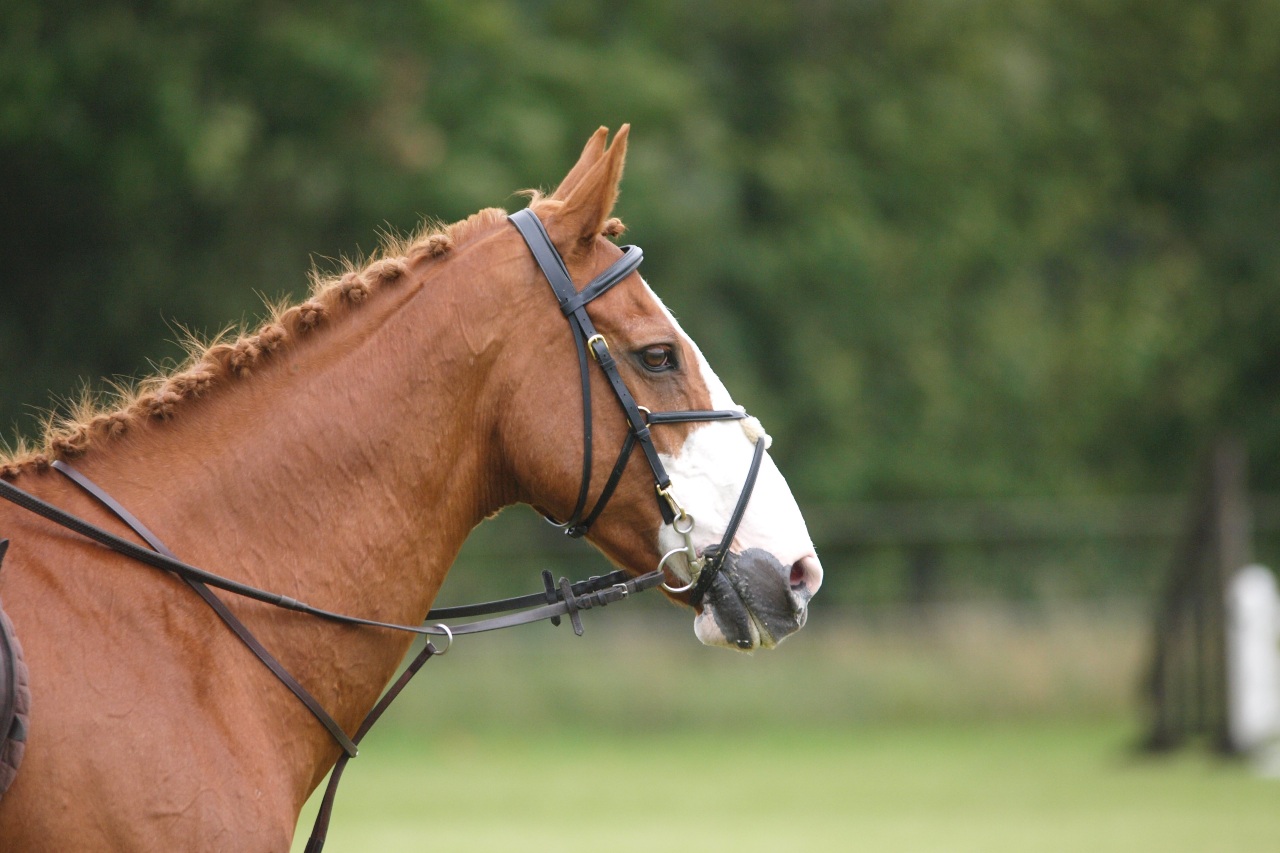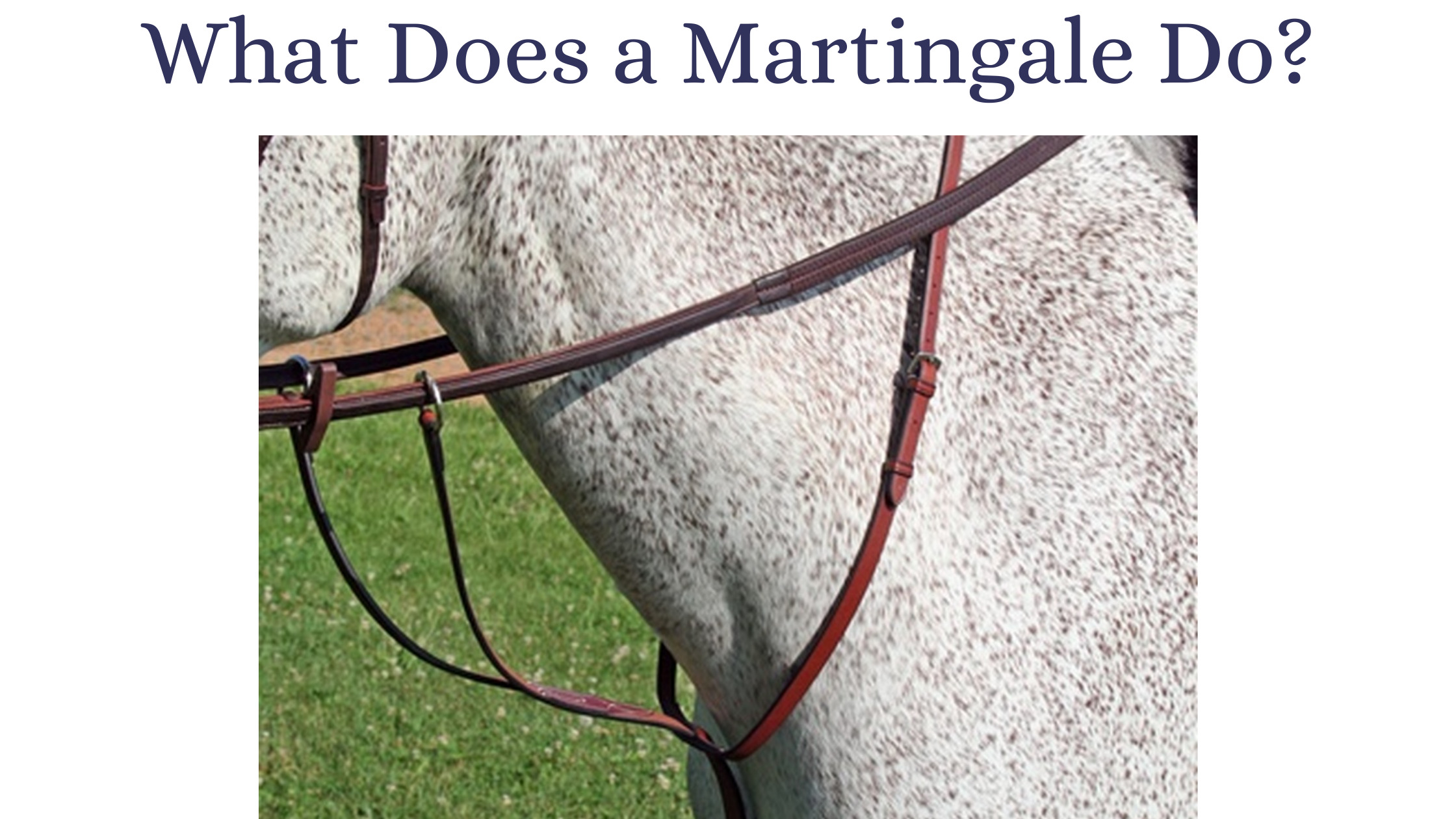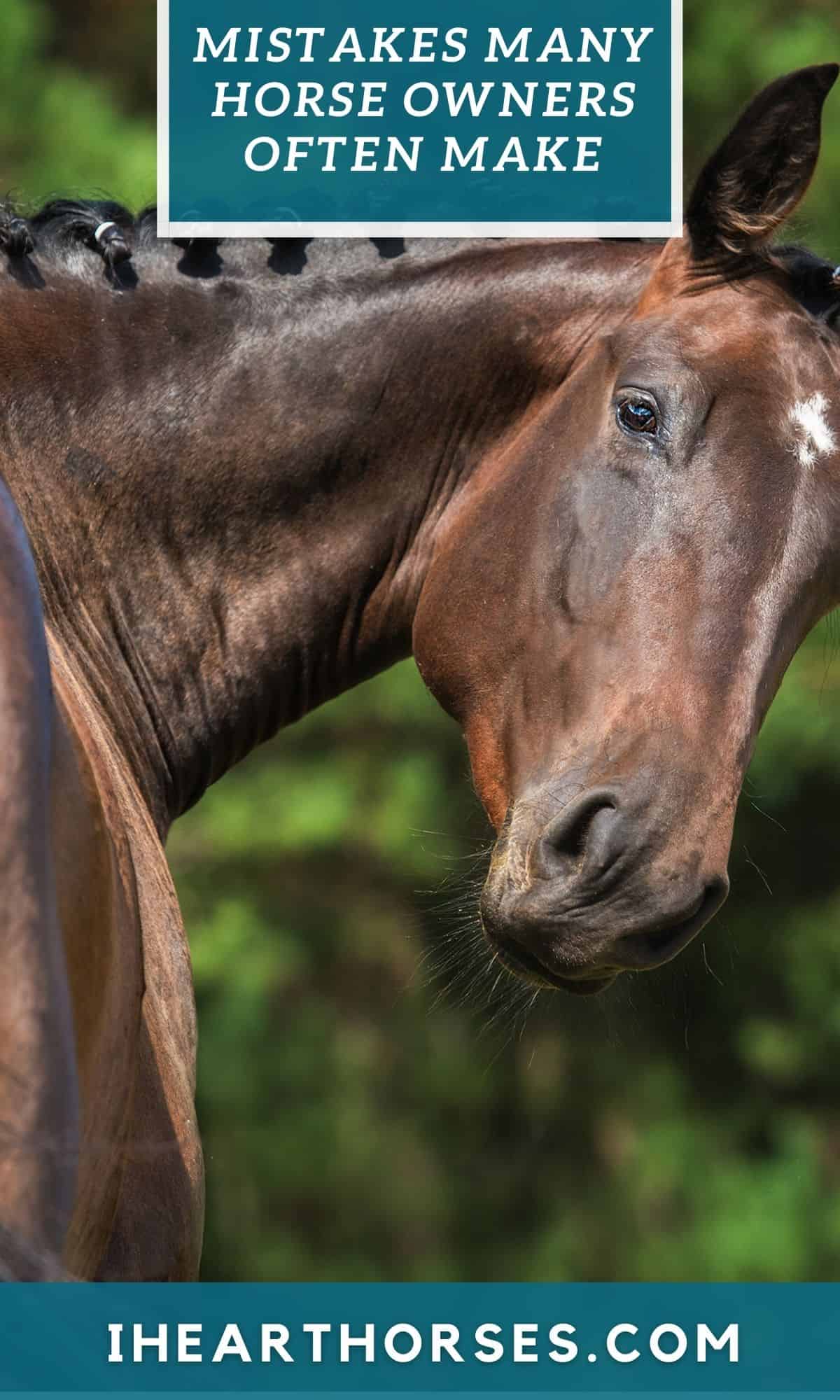A martingale is a piece of equipment which is used on horses to help control the head and neck movement of the animal. It is a popular tool used by horse riders and trainers to ensure that the horse is kept in a consistent, safe and comfortable position while being ridden. This article will provide an overview of what a martingale is, how it works and its benefits.
What is a Martingale?

A martingale is a piece of horse equipment used to control the head carriage of a horse. It is made up of two straps, one attached to the horse’s girth and the other to the noseband of the bridle. The martingale prevents the horse from raising its head too high and provides the rider with greater control.
Martingales come in several types, including running, standing, and breastplates. The running martingale is the most commonly used type, and it consists of an adjustable strap that attaches to the girth and runs through a ring on the noseband of the bridle. The standing martingale is similar to the running martingale, but the strap is fixed and does not adjust. The breastplate martingale is a type of running martingale that attaches to the breastplate and goes through a ring on the noseband.
| Type | Description |
|---|---|
| Running Martingale | Adjustable strap that attaches to the girth and runs through a ring on the noseband of the bridle. |
| Standing Martingale | Similar to the running martingale, but the strap is fixed and does not adjust. |
| Breastplate Martingale | Type of running martingale that attaches to the breastplate and goes through a ring on the noseband. |
Martingales are often used by experienced riders who want to maintain control of their horse’s head carriage. They are also commonly used in dressage and jumping to help the horse stay in balance and maintain proper form. However, they should never be used as a substitute for correct training and should always be used with an understanding of proper horsemanship.
Martingales for Horses

A martingale is an important piece of tack used to control a horse’s head carriage while riding. Martingales are designed to keep a horse from throwing its head too high, providing the rider with more control and a more secure seat. There are three main types of martingales: standing, running, and German.
Types of Martingales
- Standing Martingale: This type of martingale is the most common and is designed to keep the horse from throwing its head too high. It consists of a piece of leather or nylon strap that attaches to the horse’s girth, runs up through the rings on the bit, and attaches to the noseband or throatlatch. It applies pressure when the horse throws its head up, keeping it from going too high.
- Running Martingale: This type of martingale is designed to keep the horse from raising its head too high, but it is not as restrictive as a standing martingale. It consists of two straps that attach to the girth and run up through the bit rings, then attach to the noseband or throatlatch. It applies pressure when the horse throws its head up, but the pressure is not as severe as the standing martingale.
- German Martingale: This type of martingale is designed to keep the horse from raising its head too high and is similar to the running martingale. It consists of two straps that attach to the girth and run up through the bit rings, then attach to the noseband or throatlatch. The difference between the German martingale and the running martingale is that the German martingale has a third strap that runs from the center of the girth to the noseband or throatlatch, providing more control.
Benefits of Using a Martingale

- Improves Posture – The martingale applies pressure to the horse’s poll, encouraging it to carry its head in a more upright position.
- Prevents Overflexion – By keeping the horse’s head up, it prevents it from overflexing and causing discomfort.
- Increases Communication – The martingale helps the rider communicate better with their horse, as it allows them to use subtle cues to control the horse’s head position.
- Provides Security – It provides a sense of security to the horse by reminding them to maintain a certain head position and not to overflex.
- Increases Safety – As the horse is less likely to overflex, the risk of tripping and falling is greatly reduced.
How to Put a Martingale on a Horse

A martingale is a type of safety equipment designed for use on horses. It is used to prevent the horse from throwing its head up and down when being ridden. The martingale works by attaching a strap to the horse’s girth and then running it up through a loop on the bridle, so that when the horse throws its head up, the strap tightens and prevents the head from going too far up. The martingale is a useful tool for preventing the horse from bucking or rearing, but it is important to make sure it is used correctly and fits the horse properly.
Things You Will Need
- Martingale
- Bridle
- Horse
Steps
- The first step is to make sure the martingale is the right size for the horse. The martingale should fit snugly under the horse’s chest, so that it is not too tight or too loose. To check the fit, put the martingale on the horse and then adjust the straps so that the loops on the ends fit snugly against the horse’s chest.
- Next, attach the martingale to the bridle. Most martingales have a loop at the top that fits through the bridle’s bit. Make sure the loop is securely attached to the bit, and then adjust the straps so that the martingale is sitting comfortably on the horse’s chest.
- The last step is to adjust the straps. The straps should be adjusted so that there is just enough tension to keep the martingale from slipping back and forth on the horse’s chest. If the straps are too tight, the horse may be uncomfortable and may try to avoid wearing the martingale. If the straps are too loose, the martingale may not be effective.
Tips
- Make sure to regularly check the martingale for wear and tear, and replace it if necessary.
- It is important to make sure the martingale fits properly and is adjusted correctly, as an improperly fitted martingale can be uncomfortable or ineffective.
Common Mistakes

- Using a martingale that is too tight – A martingale should be snug, but not overly tight. If the martingale is too tight, it can choke the horse, restrict its movement, and even cause pain and discomfort.
- Using a martingale incorrectly – A martingale should only be used when a horse is going to be ridden, and should be removed immediately after riding. It should never be used as a harness, as this can cause additional strain on the horse’s neck and shoulders.
- Attaching a martingale to a saddle that is too loose – If a martingale is attached to a saddle that is too loose, it can cause the saddle to slip, which can lead to accidents and injury.
- Using a martingale for a horse who is not used to it – If a horse is not used to wearing a martingale, it can be uncomfortable, so it is important to introduce it gradually and make sure the horse is comfortable with it before using it for riding.
- Using a martingale with a poorly fitting saddle – A martingale can help to stabilize a saddle that is not properly fitted, but it is always best to have a properly fitted saddle to begin with.
Safety Considerations

When using a martingale for horses, it is important to ensure the safety and comfort of both the horse and the rider. Before using a martingale, it is important to make sure it fits properly and that all necessary adjustments have been made.
| Type of Martingale | Safety Considerations |
|---|---|
| Running Martingale | A running martingale should be adjusted so that it is tight enough to keep the horse from throwing its head up, but loose enough to allow the horse to comfortably move its head. The martingale should also be checked regularly for wear and tear. |
| Standing Martingale | A standing martingale should be adjusted so that it is tight enough to prevent the horse from throwing its head up, but loose enough to allow the horse to comfortably move its head. The martingale should also be checked regularly for wear and tear. |
| Cross-Under Martingale | A cross-under martingale should be adjusted so that it is tight enough to prevent the horse from throwing its head up, but loose enough to allow the horse to comfortably move its head. The martingale should also be checked regularly for wear and tear. |
It is also important to make sure that the martingale is not too tight or too loose. The martingale should be checked before each ride to make sure it is properly adjusted. Additionally, it is important to make sure the martingale is not rubbing the horse’s neck or body in any way.
Finally, it is important to make sure the rider is comfortable and secure when using a martingale. The rider should make sure that the martingale is not too tight or too loose, and that it is not interfering with the horse’s movement or comfort.
When to Use a Martingale
A martingale is a piece of horse tack often used in combination with a bridle or bitted headstall. It is used to provide additional control over the head and neck of a horse and to prevent the horse from raising its head too high. The primary purpose of a martingale is to keep the horse from throwing its head too high or from pulling back against the reins. The martingale is designed to create leverage against the horse’s neck, with the straps of the martingale running diagonally from the bit rings to the girth.
When to use a martingale depends on the horse and the rider. A martingale can be used with any horse, but it is most often used with green or uneducated horses that are more likely to try to raise their head and pull against the reins. In general, martingales should only be used when the rider is able to maintain control of the horse and keep the horse’s head in the correct position.
| Horse | Suitable Use of Martingale |
|---|---|
| Green or Uneducated Horse | To prevent the horse from raising its head too high or pulling back against the reins |
| Horse that is not used to a bit | To help keep the horse’s head in the correct position |
| Horse that is heavy on the bit | To provide additional control over the head and neck of the horse |
| Horse that has a habit of throwing its head up | To help keep the horse from throwing its head too high |
Martingales should not be used on horses that are already accustomed to a bit. The use of a martingale can interfere with communication between the rider and the horse and can cause the horse to rely on the martingale for balance instead of on the rider’s hands. It is important to note that a martingale should never be used as a substitute for proper training and should only ever be used in combination with a bridle or bitted headstall.
Frequently Asked Questions
1. What types of martingales are available for horses?
A martingale is a piece of equestrian equipment used to help control a horse’s head carriage and movement. There are several types of martingales available for horses that are designed to suit different purposes.
- Running Martingale: A running martingale is used to help prevent a horse from throwing its head up in the air. It is attached to the saddle and girth on one end and has two straps that attach to the reins on the other end. The amount of pressure applied to the horse’s head can be adjusted by tightening or loosening the straps.
- Standing Martingale: A standing martingale is designed to help keep a horse’s head in a certain position. It attaches to the saddle and girth and has a strap that runs up the horse’s neck and attaches to the reins. This type of martingale keeps the horse from being able to raise its head too high.
- Crossed Martingale: A crossed martingale is used to help keep a horse’s head in a certain position and also prevents the horse from throwing its head up. It has two straps that attach to the saddle and girth and then cross over the horse’s neck. The straps then attach to the reins. This type of martingale can be adjusted to different lengths to provide the desired amount of pressure.
- Lunging Martingale: A lunging martingale is used when lunging a horse. It is designed to help keep the horse’s head in a certain position and can help prevent the horse from throwing its head up. It attaches to the saddle and girth and has a strap that runs up the horse’s neck and attaches to the reins. This type of martingale can be adjusted to different lengths to provide the desired amount of pressure.
- Figure 8 Martingale: The figure 8 martingale is designed to provide additional control over a horse’s head and neck. It is used to help keep a horse’s head in a certain position, and also prevents the horse from throwing its head up. It attaches to the saddle and girth and has two straps that cross over the horse’s neck. The straps then attach to the reins. This type of martingale can be adjusted to different lengths to provide the desired amount of pressure.
2. How should a martingale be adjusted to fit a horse correctly?
When fitting a martingale to a horse, there are a few key points to consider:
- The martingale should fit snugly, so that it does not interfere with the horse’s range of motion.
- The martingale should be adjusted to the width of the horse’s chest and neck, with enough room for the horse to move freely, but not so loose that it will slide off or become uncomfortable.
- The martingale should be adjusted to the length of the horse’s neck, ensuring that the martingale does not interfere with the horse’s head carriage.
- The martingale should be adjusted to the length of the horse’s back, so that it does not interfere with the horse’s gait.
- Finally, the martingale should be adjusted so that it is sitting in the correct position on the horse’s chest. This will help the horse to move more freely, and will also help to prevent the martingale from slipping or becoming uncomfortable.
By properly adjusting the martingale to fit the horse, it can provide the horse with a comfortable and secure fit. This will help to ensure that the horse is able to move freely and safely, while still providing the rider with the control and security they need.
3. What are the benefits of using a martingale on a horse?
- It helps to keep the head in the correct position while riding.
- It ensures that the horse maintains a steady pace and gait.
- It helps to keep the reins in the correct position.
- It reduces the risk of a horse throwing its head too high or too low.
- It encourages the horse to keep its neck in a natural, raised position.
- It helps to keep the horse in balance and prevent the rider from being pulled out of the saddle.
- It helps to reduce the tension of the reins, making it easier for the horse to respond to the rider’s commands.
- It helps to prevent the horse from getting tangled in the reins.
4. What is the difference between a standing martingale and a running martingale?
The two main types of martingales used for horses are the standing martingale and the running martingale. The standing martingale is designed to limit the elevation of the horse’s head, while the running martingale is used to help with steering, control, and balance.
- Standing Martingale – This type of martingale is used to limit the elevation of the horse’s head. It is most commonly seen in the English disciplines, such as dressage, show jumping, and fox hunting. The standing martingale is made up of two straps that are attached to the horse’s girth and the noseband of the bridle. It helps to keep the head from becoming too high, and is adjustable to fit different horses.
- Running Martingale – The running martingale is used to help with steering, control, and balance. It is often seen in the Western disciplines, such as reining and barrel racing. The running martingale is made up of a single strap that runs from the girth up to the bit, and is adjustable to fit different horses. It helps to keep the horse’s head in a more natural position, and is often used to help with steering and control.
5. What safety considerations should be kept in mind when using a Martingale on a Horse?
When using a Martingale on a horse, it is important to keep in mind several safety considerations:
- The Martingale should be adjusted properly to fit the horse’s body and size. It should not be too tight or too loose.
- The Martingale should not be used on young horses, as it can be too restrictive for their smaller frames.
- The Martingale should be worn over a properly fitted saddle and bridle.
- The Martingale should be used in conjunction with a proper riding technique, and should not be relied upon to correct the horse’s behavior.
- The Martingale should be inspected regularly for any signs of wear or damage.
Conclusion
A martingale is a piece of equestrian equipment used on horses to control head carriage and to prevent the horse from raising its head too high. It is usually used in conjunction with a bridle and on a horse with a neck that is too long or too short, or with a head carriage that is too high. Martingales are also used to keep a horse from running away from its handler, or to keep a horse from bolting in response to a certain stimulus such as a loud noise.
Martingales come in a variety of styles and sizes, and can be used on horses of all shapes and sizes. There are also a variety of materials used to make martingales, including leather, nylon, and fabric. It is important to choose the right size and type of martingale for your horse, as an ill-fitting martingale can be uncomfortable and cause injury.
Overall, martingales are a useful piece of equipment for any horse owner. They can help keep a horse’s head carriage in check, and can help keep a horse from running away or bolting in response to a stimulus. They can also help reduce the risk of injury caused by an ill-fitting martingale. With the right size and material, a martingale can help keep a horse safe and comfortable.



